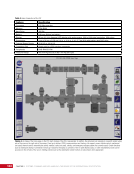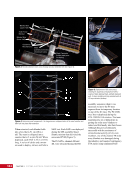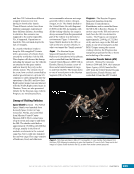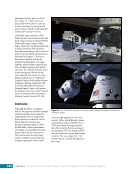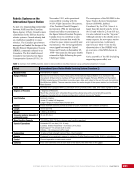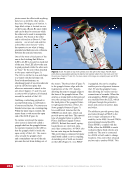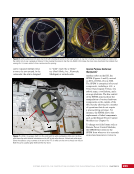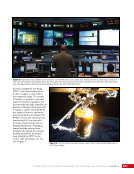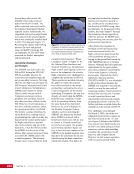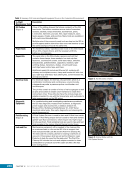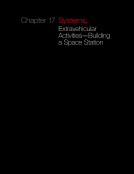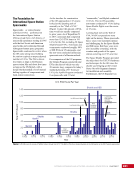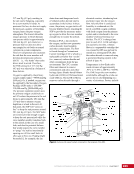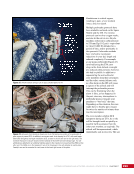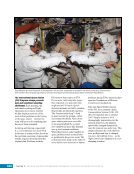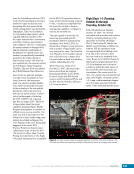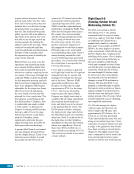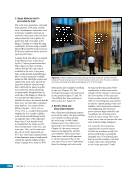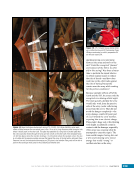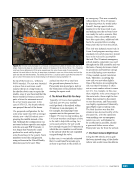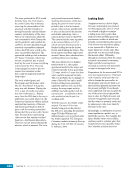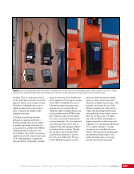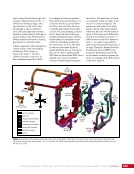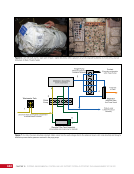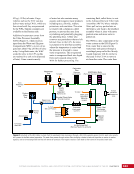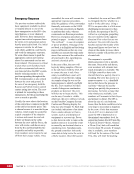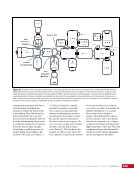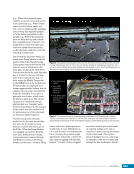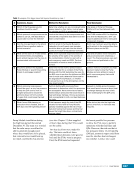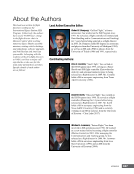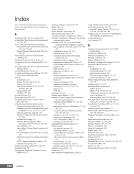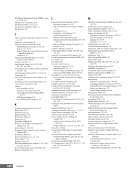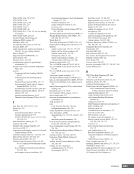187 DAY IN THE LIFE: PREPARING FOR THE UNEXPECTED CHAPTER 10 FLIGHT: Alright you have your procedure ready? SPARTAN: I do FLIGHT I’m in 9.19 and 9.20, Loop A, Loop B. I do have one step to park the TRRJ [Thermal Radiator Rotary Joint, which positions the external ammonia radiators] for structural integrity… FLIGHT: Why don’t you go ahead and do that. SPARTAN: Copy. FLIGHT: And CRONUS you have PTR back up? CRONUS: I do FLIGHT. ETHOS: FLIGHT, ETHOS. FLIGHT: ETHOS? ETHOS: Okay FLIGHT we are currently moding over to Dual, I will let you know how that goes, additionally I’m still looking at my pressures on Russian versus US segments, I still see the Russian Segment pressure increasing, and I have verified that we have good IMV [InterModule Ventilation] closure, between the two vehicles, so that’s indicative to me that the hatch is still open. FLIGHT: Okay let’s make a call to the crew to tell them that we are expecting them in the Russian Segment with the hatch between the US and Russian Segment closed, they should be in 3.3 in step 8 to call down those CMS readings [Chip Measurement System, which can detect airborne concentration of ammonia]. CAPCOM [on the S/G-1 loop]: Station, Houston on Space to Ground 1, we are expecting you in 3.3 for ammonia release and we are waiting for your readings on step 8. We are also expecting you to be isolated in the Russian Segment with the hatch closed between the Russian and the US Segment. ETHOS: FLIGHT, ETHOS for ITCS status. FLIGHT: Go ahead. ETHOS: FLIGHT I got the Mode Unknown again, so I’m not….there’s no way I can… I can’t tell… I cannot basically put this into Dual loop mode, I’m missing something FLIGHT, the LA-1 MDM one of my valves is not transitioning over, so there’s no way I can actually split apart. So right now I recommend venting both ETCS loops. We do see it coming into the US Segment, and from what I can tell it’s going to be the entire station with equal pressures across the stack. Since we have not heard from the crew I’m pretty worried about the safety there so I’m going to stand down on any type of ITCS configurations and I’m going think about where I’m going to go to try to recover crew. FLIGHT: SPARTAN, you’re go to vent. SPARTAN: Vent both loops FLIGHT? FLIGHT: Vent both loops, yes. SPARTAN: Copy. ETHOS: FLIGHT, since we haven’t heard from the crew at all too I’d like to go ahead and call the entire team into looking at anything in their systems that might give us an idea of where the crew might be… if there’s any movement or activity at all on Station. SPARTAN: And FLIGHT, SPARTAN, just to let you know, my next command for both loops will vent the loops. FLIGHT: Ok, you’re go. SPARTAN: And FLIGHT, SPARTAN, for the team, both Loop Alpha and Loop Bravo are currently venting. FLIGHT: Copy, external loops venting. After some additional time working through the scenario, the call that brings relief to the hard working team is made. CTO: FLIGHT, CTO, on your loop. FLIGHT: CTO, FLIGHT. CTO: Yes ma’am I’d like to call the sim here. 15 minutes, let everybody take a break, come back at 3:30. FLIGHT: Copy, 3:30. The Debrief When a simulation ends, the team members almost always breathe a sigh of relief. For a number of hours, the team has been running at top speed, diagnosing failures, recovering systems, and pressing ahead on the timeline. But even when the sim ends, the work is not over. The last thing the team does is perform a self-critique—called a debrief—led by FLIGHT and the CTO. During debrief, the team will review the major events, this time with the training team explaining what was really going on. What did the flight control team members do wrong? What could they do better next time? In general, how did they do in terms of problem recognition, mission cognizance, communications, and team management, and how was their attitude? Although each individual flight controller strives to improve his or her performance, these simulations often result in a better way to coordinate, perhaps even including changes to flight rules or procedures. In the simulation from April 24, the failure that initially appeared minor but played a major role in the rest
Purchased by unknown, nofirst nolast From: Scampersandbox (scampersandbox.tizrapublisher.com)








































































































































